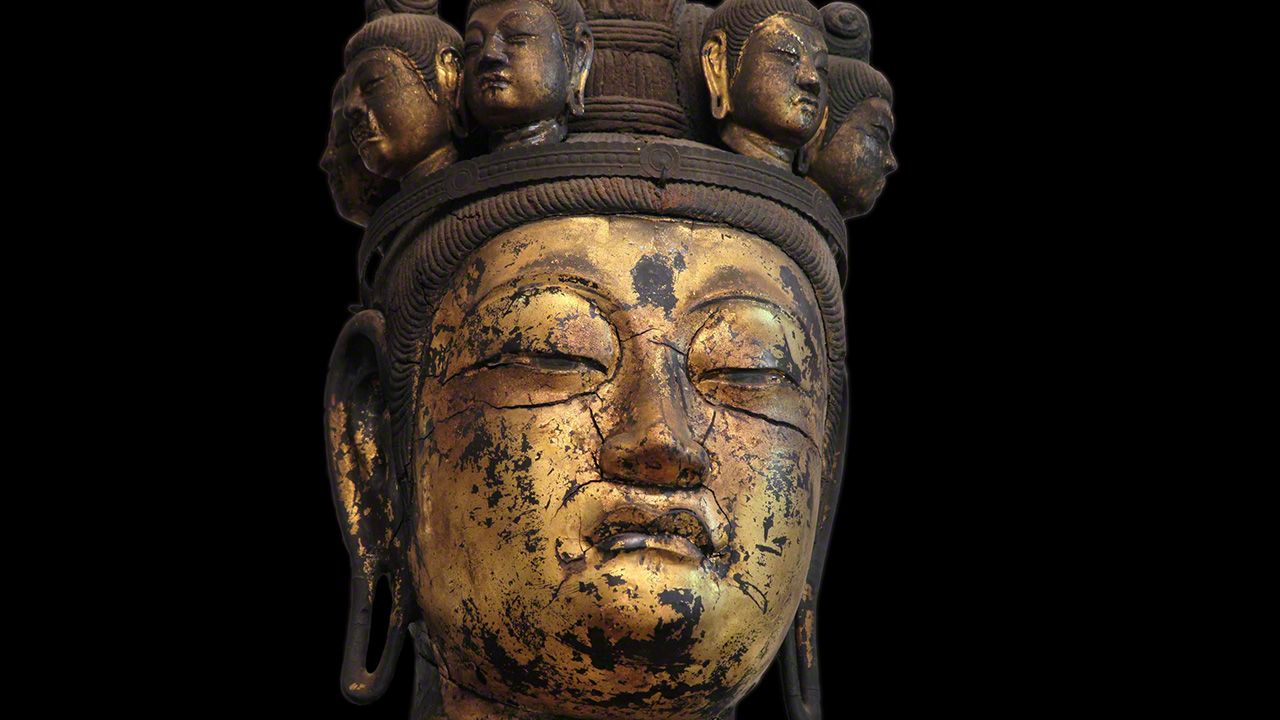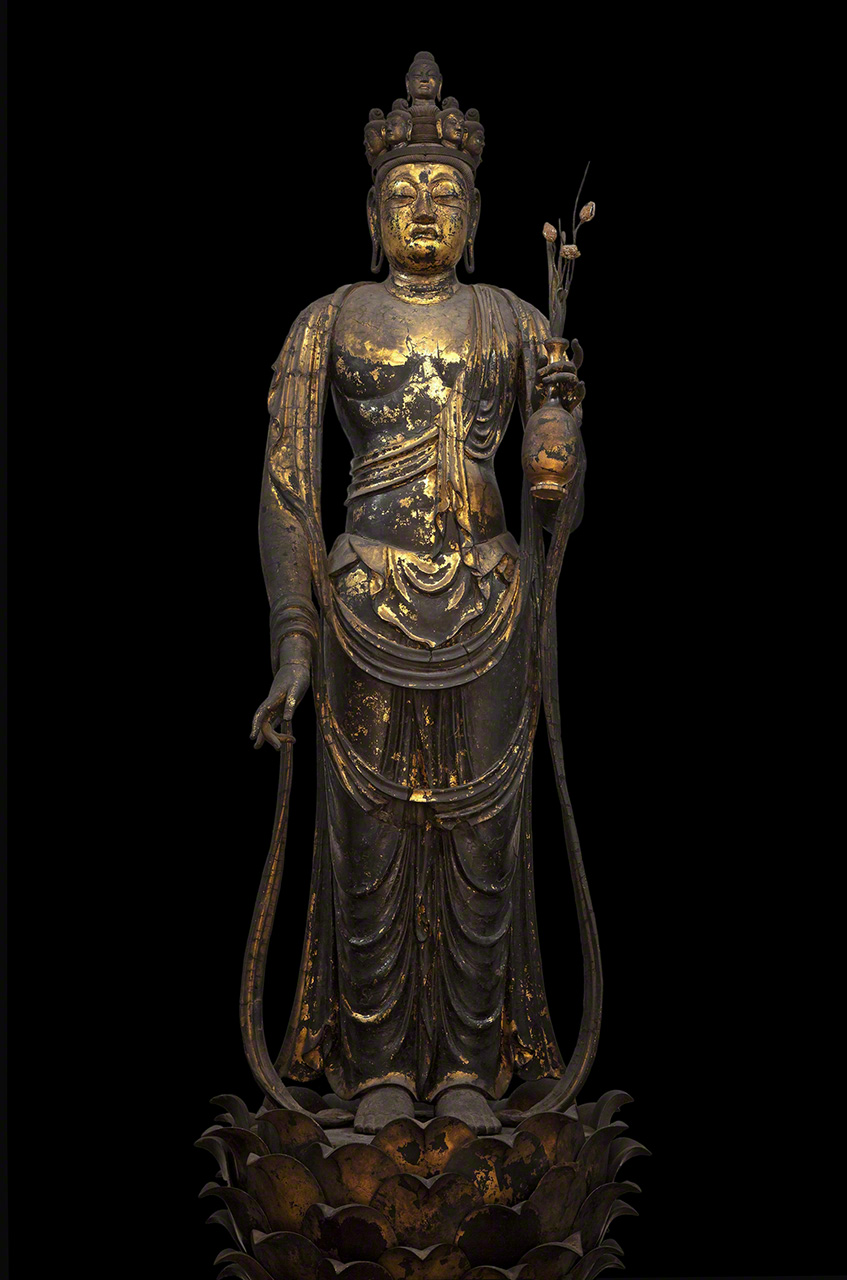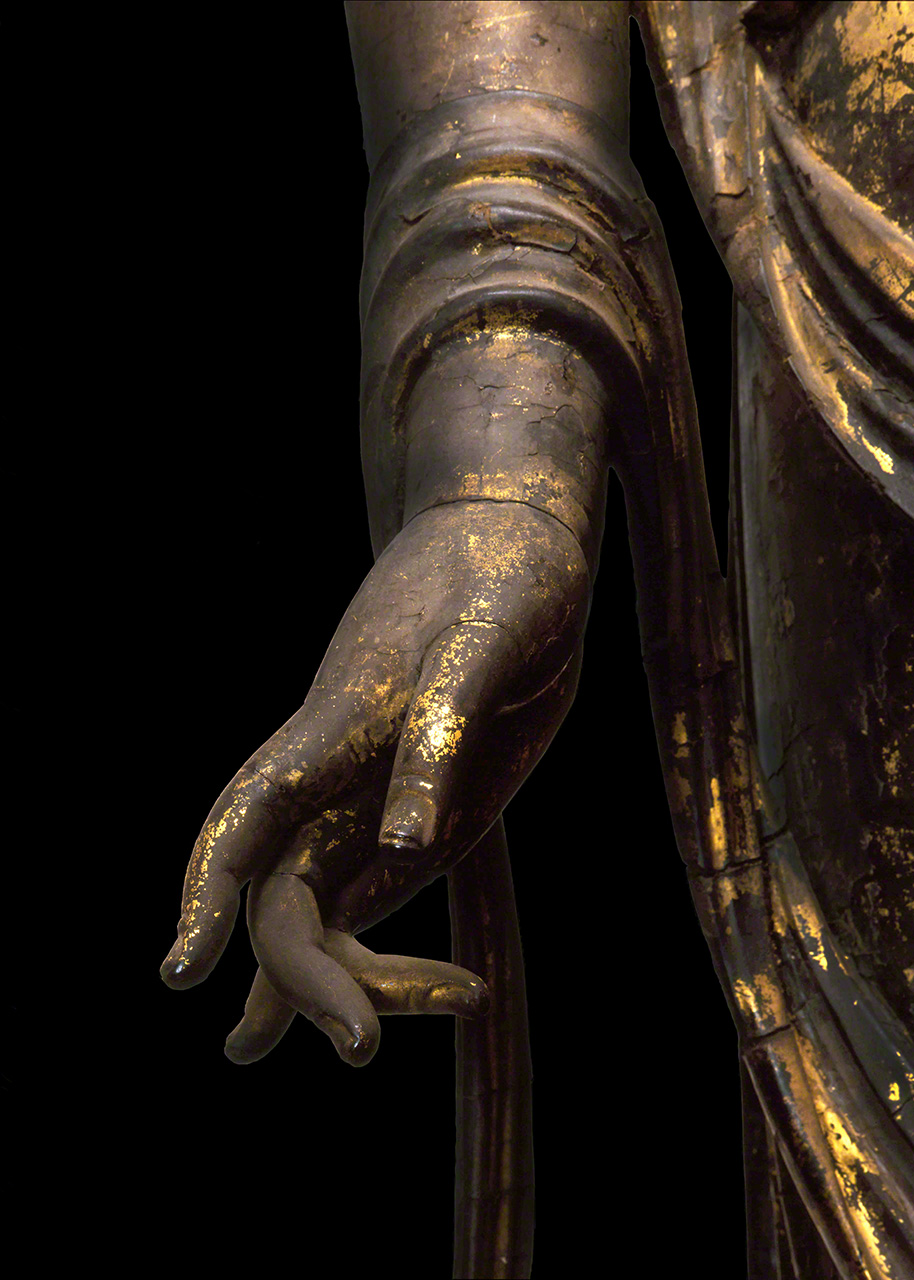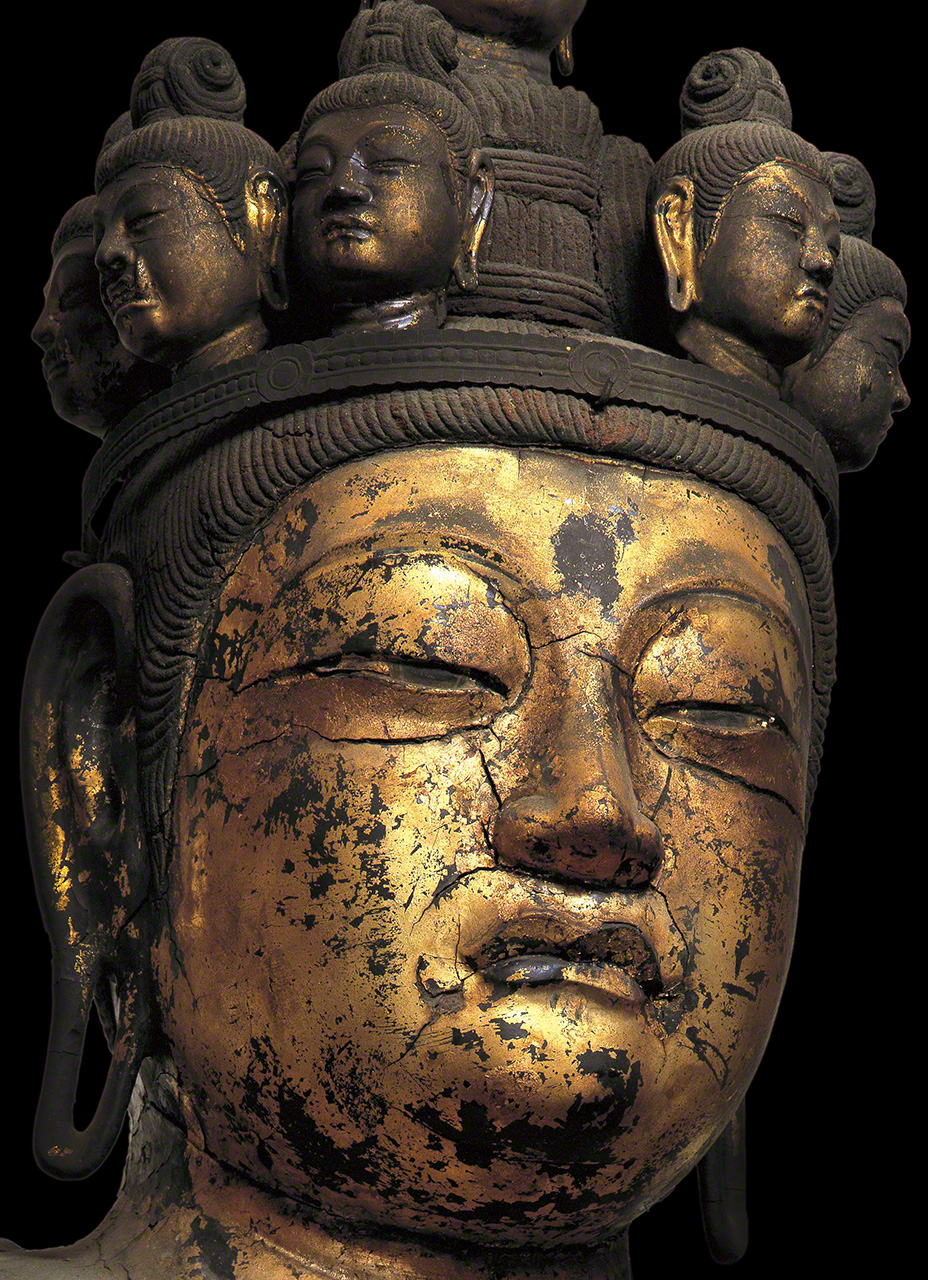
Eleven Faces of Beauty: Nara’s Standing Statue of the Bodhisattva Avalokitesvara
Culture Art Travel Guide to Japan- English
- 日本語
- 简体字
- 繁體字
- Français
- Español
- العربية
- Русский

(© Muda Tomohiro)
あをによし 奈良の都は 咲く花の にほうがごとく 今盛りなり
Aoniyoshi / Nara no miyako wa / saku hana no / niou ga gotoku / ima sakari nari
The royal city
Nara of the blue-green earth
like blossoming trees
that shimmer into fragrant bloom
is at the height of splendor now(Translation by Edwin Cranston, from The Gem-Glistening Cup.
This famous poem from the Man’yōshū collection, Japan’s first anthology of verse, compares Nara to the glories of spring, when the air is filled with fragrant blossoms, sunlight, and vibrant life. This standing image of the 11-headed Kannon (Jūichimen Kannon) was made in the Tenpyō era, when the culture of Heijōkyō (Nara) was at its glittering height. The many faces of this and similar sculptures express the many-sided salvific powers of Kannon Bosatsu, the Bodhisattva Avalokitesvara.
In art history, Tenpyō denotes an era during which Japanese Buddhist art reached a new zenith. Although some regard the term as more or less synonymous with the Nara Period (710–793), I regard the era as covering the period from 710 to 783. In his book on pilgrimages to ancient temples (Koji junrei), the moral philosopher Watsuji Tetsurō described this image as “the supreme masterpiece of the Tenpyō era.”
The statue originally stood as the main image at Daigorinji, a Buddhist temple that was associated with the Ōmiwa Shintō shrine, where the enshrined deity is Mount Miwa itself. During the Nara Period, imported Buddhist beliefs became mixed and intermingled with indigenous Shintō practices, giving rise to a unique syncretism of worship of kami and Buddha worship. Buddhist temples were often built next to Shintō shrines, with the aim of ensuring peaceful coexistence between the native gods and imported Buddhism. Shintō worship in the shrines focused on objects such as mirrors and swords that were seen as embodying the deity, while Buddhist images were made as the focus of worship in the temples.
In 1868, the new Meiji government passed a law decreeing the separation of Buddhism and Shintō as part of its program to install Shintō as the focus of a new nationalistic cult centered on the emperor and state. As a jingū-ji, or Buddhist temple attached to a Shintō shrine, Daigorinji was one of many that was abolished and pulled down. The custodians of Daigorinji handed the temple’s priceless main image to the temple Shōrinji, with which it had always had a close relationship. In 1878, Ernest Fenollosa came to Japan from the United States at the invitation of the Japanese government to teach philosophy and political economy at Tokyo Imperial University. In his spare time, Fenollosa devoted himself to a study of Japanese art. He was so struck by the beauty of this image when he came to see it that he donated a moveable zushi (miniature shrine) fitted with wheels that could be used to move the image to safety in the event of fire.
At the time, many priceless masterpieces of Buddhist art were under threat from haibutsu-kishaku, an iconoclastic movement seeking to eradicate Buddhist influences that swept the country in the aftermath of the revolutionary changes that brought the new government to power. Others were simply tossed aside, regarded as useless. Perceiving the threat to a priceless part of Japan’s cultural heritage, Fenollosa worked hard to protect Buddhist images. His efforts led to the passing of the Ancient Temples and Shrines Preservation Law in 1897. In 1899, the 11-headed Jūichimen Kannon image at Shōrinji was designated a national treasure under the same law. When the current Act on Protection of Cultural Properties was passed in 1951 after World War II, this image was once again the first item to be designated as a national treasure.

(© Muda Tomohiro)
The sculpture was made using the mokushin kanshitsu (wood core dry-lacquer) technique, in which a carved wooden core is overlaid with multiple layers of thick paste called kokuso, consisting of lacquer, wood powder, and other ingredients. This technique, introduced during the Nara period as an alternative to carving the sculpture out of a single piece of wood, made it possible to achieve subtler and more detailed expressions. The results can be seen in this sculpture, where each strand of hair is individually sculpted, and the swelling folds of the robes are brought out in a way that would never have been possible before. The head is given greater depth, and the statue as a whole exudes a sense of weight and solidity.
The Buddhist art produced in Japan at this time is marked by what we might called the perfection of realism. Artists seem to have been moved to depict concrete, visible truth, without any mixture of subjectivity. Through the Asuka and Hakuhō periods, Japanese artists gradually perfected the art of sculpture. In the Tenpyō era that followed, they produced images with an almost uncanny degree of realism and spiritual presence. This masterpiece encapsulates perfectly the glories of the Nara Period, when Buddhism and Buddhist art flourished under the protection of the state in the nation’s first permanent capital.

(© Muda Tomohiro)
Standing Statue of the 11-Headed Bodhisattva Avalokitesvara (Sanskrit: Ekādaśamukha, Japanese: Jūichimen Kannon)
- Height: 209.1 cm
- Date: Late Nara Period
- Shōrinji (Sakurai, Nara Prefecture)
- National treasure
(Originally published in Japanese. Banner photo: The standing statue of Kannon at the Nara temple Shōrinji. © Muda Tomohiro.)
